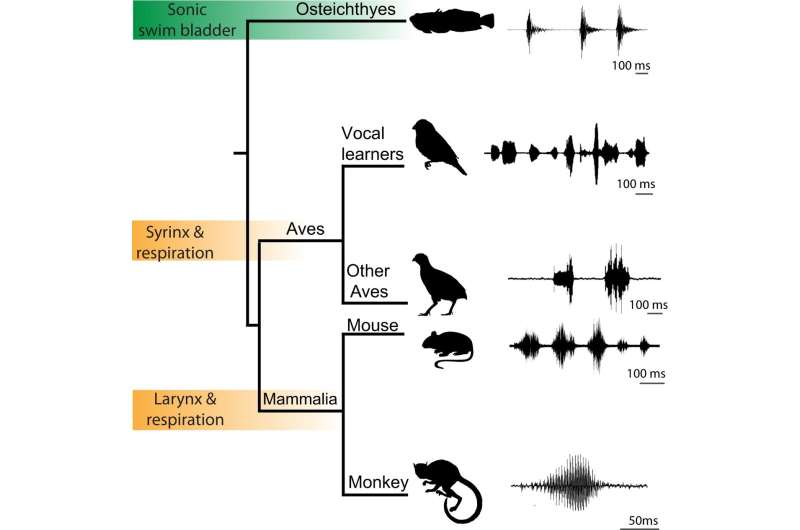This article has been reviewed according to Science X's editorial process and policies. Editors have highlighted the following attributes while ensuring the content's credibility:
fact-checked
peer-reviewed publication
trusted source
proofread
California singing fish's midbrain may serve as a model for how mammals control vocal expressions

For talkative midshipman fish—sometimes called the "California singing fish"—the midbrain plays a robust role in initiating and patterning trains of sounds used in vocal communication.
The midbrain in these fish, it turns out, may serve as a useful model for how mammals and other vertebrates, including humans control vocal expressions, according to Cornell behavioral research published Jan. 2 in Nature Communications.
"We have the evidence to show how that this part of the brain, the midbrain, is important to voice signaling," said senior author Andrew Bass, the Horace White Professor of Neurobiology and Behavior in the College of Arts and Sciences. "It's a brain region shared by all vertebrates, whether we are discussing a fish, a bird, or a person and is crucial to sound patterning and selection."
Midshipman fish phrasing takes the form of grunts, growls and hums whenever the males seek mates or fend off foes, Bass said. To the human ear, the hum might sound like a single note on a French horn or a foghorn. While midshipman fish live deep offshore in Northern California and the Pacific Northwest during the fall and winter, they wend their way to the shallow intertidal zones to spawning sites in the late spring and summer. They're good dads and guard hundreds of unhatched eggs that grow into free-swimming fry located under rock shelters.
At low tides, people sitting along the shore at high during a quiet summer night report the steady, conversational hum of a male midshipman fish chorus.
Science has known that mammals and other vertebrates emit sound and vocalize to communicate behaviors, but the midbrain responsible for initiating acoustic features—like patterned hums in these fish or the formation of cogent sentences in humans—had largely gone unexplored.
Eric R. Schuppe, formerly a Cornell postdoctoral researcher in Bass' laboratory, who is now a postdoctoral researcher at the University of California at San Francisco, led the research.
Bass, Schuppe and other lab members found that midbrain periaqueductal gray neurons in the fish are activated in distinct patterns by the males during courtship calls, foraging and nest guarding duty.
The group confirmed that the periaqueductal gray neurons evoke output to the muscles that manage sound and the vocal features of courtship, as well as show patterning other kinds of calls.
Communication signals patterned by the midbrain "have frequency and amplitude components, and the fish string together sounds in different ways," Bass said. "Maybe those sounds mean aggression or serve as a mating function—like you're trying to attract a mate to a nest, which male midshipman do with their hum."
The human brain is in the shape of a helmet and the midbrain sits at the top of brain's "stem." Fish brains are shaped more like a tube—making them a more accessible model to study experimentally, Bass said. "Our findings now show that fish and mammals share functionally comparable periaqueductal gray nodes that can influence the acoustic structure of social context-specific vocal signals," he said.
Bass noted that for humans, this research provides clues to what happens if the human midbrain gets damaged. He suggested that this research may help us understand how a malfunctioning human midbrain may render a person uncommunicative or mute.
"It's only been in the past few years, where the midbrain has gotten more attention from neuroscientists studying social communication," said Bass. "It is a major node connected to your cortex, basal ganglia, amygdala and hypothalamus. In this way, it acts as a gateway for these sources of executive functions to reach other brain regions more directly activating muscles that underlie behavioral actions."
"The midbrain is an amazing part of the brain because it points to how essential it is—if you are a vertebrate—to have the ability to produce sound communication signals. Period."
More information: Eric R. Schuppe et al, Midbrain node for context-specific vocalisation in fish, Nature Communications (2024). DOI: 10.1038/s41467-023-43794-y
Journal information: Nature Communications
Provided by Cornell University


















